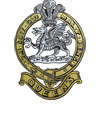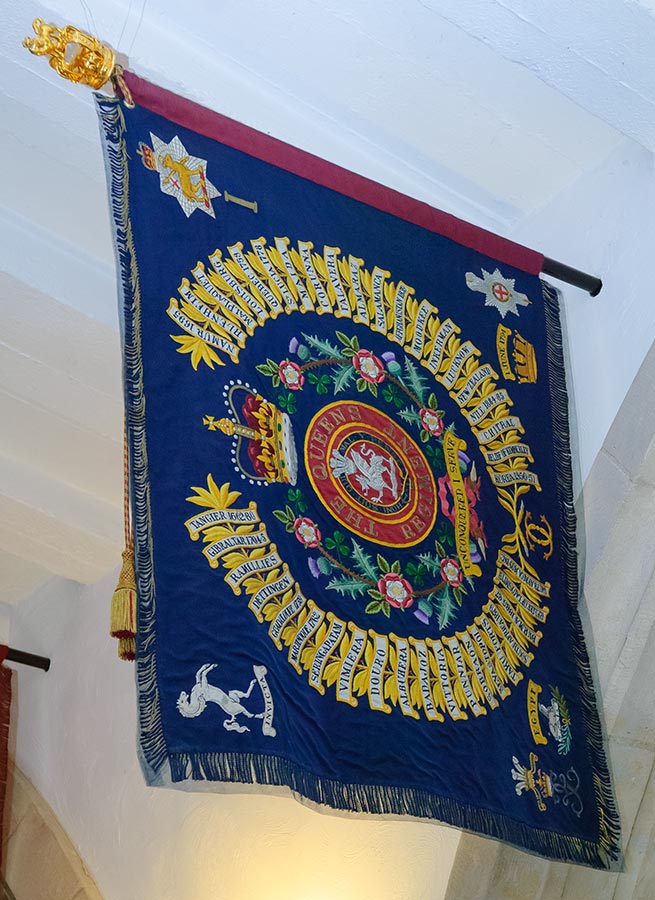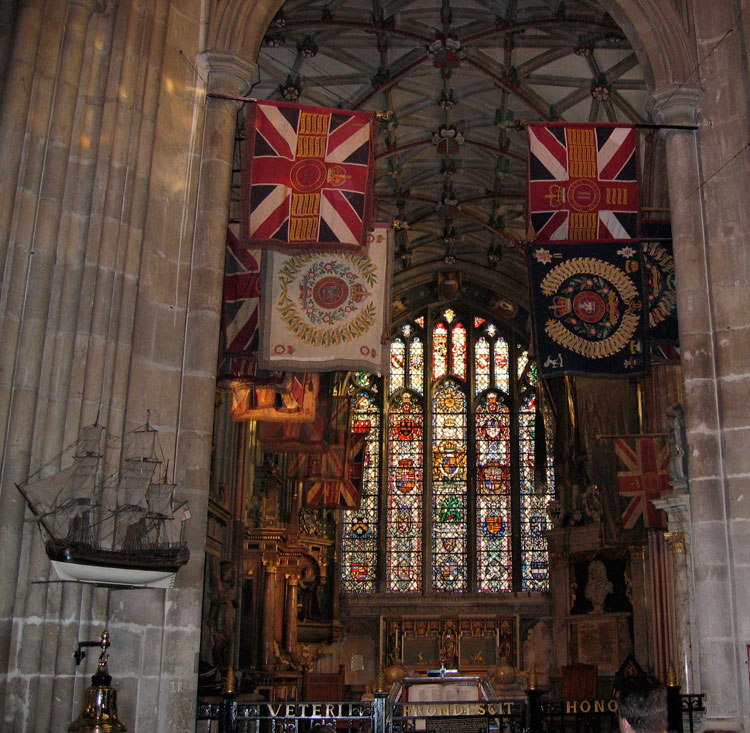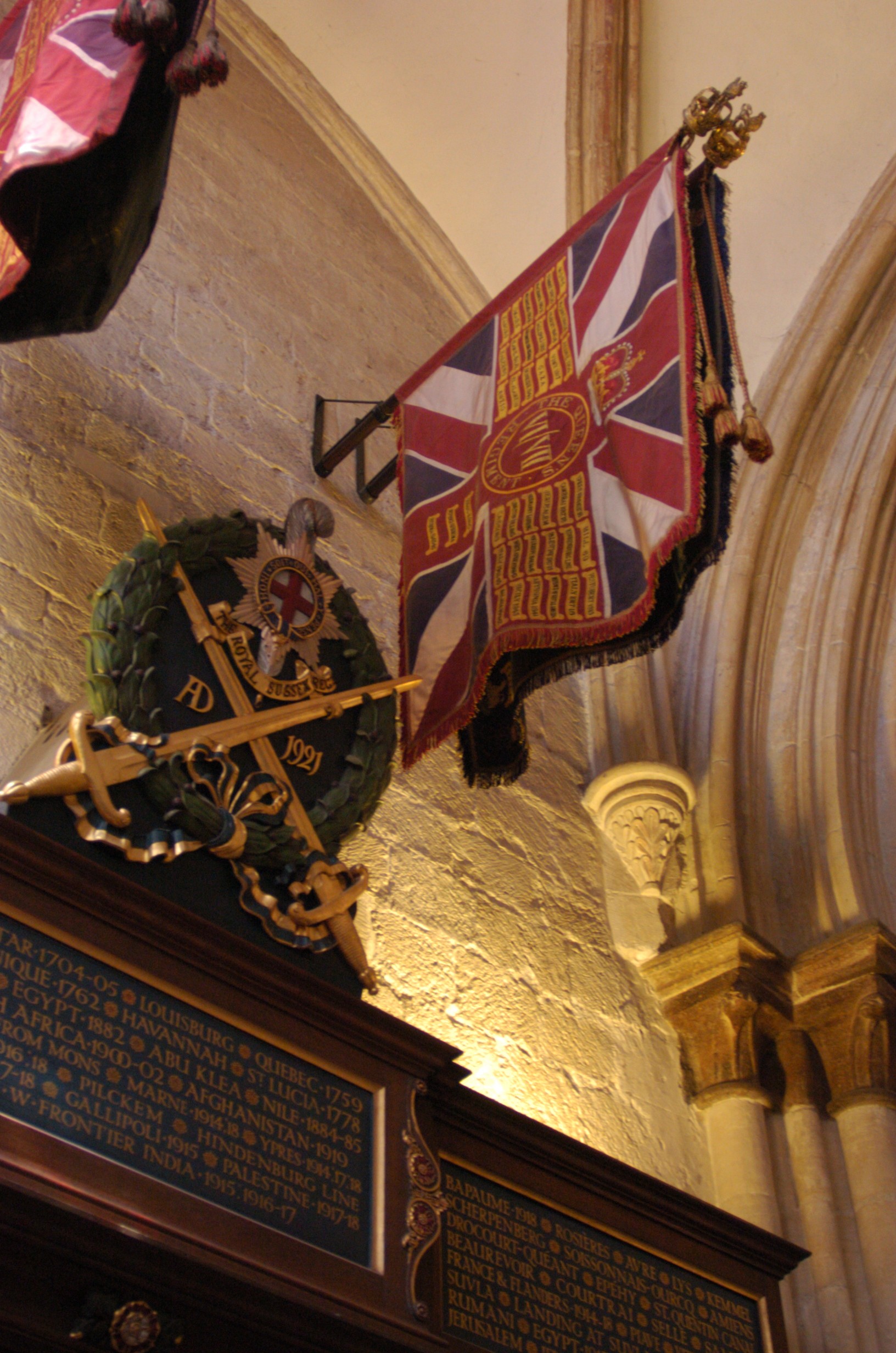
The Queen's Regiment
The Colours
The Inspector General of Colours (Garter King of Arms) who approved the design of the Colours, noted that the Colours of all Battalions would be identical, except for the numerals
The Regimental Colour

Tangier 1662-80, Namur 1695, Gibraltar 1704-05, Bleinheim, Ramilles, Malpaquet, Dettingen, Louisburg, Guadaloupe 1759, Quebec 1759, Martinique 1762, St Lucia 1778, Seringapatam, Maida, Vimiera, Corunna, Douro, Talavera, Albuhera, Almaraz, Badajoz, Salamanca, Vittoria, Afghanistan 1839, Punniar, Moodkee, Sobraon, Inkerman, Sevastopol, Lucknow, Taku Forts, New Zealand, South Africa 1879, Nile 1884-85, Burma 1885-87, Chitral, Relief of Ladysmith, Relief of Kimberley, South Africa 1899-1902, Korea 1950-51
The Colours are laid up in the following locations:
1st Battalion – Guildford Cathedral
2nd Battalion – Canterbury Cathedral
3rd Battalion – St Paul’s Cathedral
5th (Volunteer) Battalion – Regimental Museum, Dover
6/7th (Volunteer) Battalion – Chichester Cathedral
The Queen's Colour
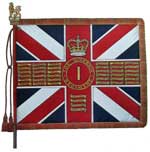
Mons, Marne 1914-18, Aisne 1914, Ypres 1914-15-16-17-18, Hill 60, Festubert 1915, Somme 1916, 1918, Albert 1916, 1918, Vimy 1917, Cambrai 1917-18, Hindenburg Line, Italy 1917-18, Macedonia 1915-18, Gallipoli 1915, Gaza, Jerusalem, Palestine 1917-18, Defence of Kut al Amara, Mesopotamia 1915-18, NW Frontier India 1915, 1916-17. Dunkirk 1940, Normandy Landing, North West Europe 1940, 1944-45, Abyssinia 1941, Orams, Alam el Halfa, El Alamein, Longstop Hill 1943, North Africa 1940-43, Sicily 1943, Sangro, Salerno, Anzio, Cassino, Italy 1943-45, Malta 1940-42, Hong Kong, Defence of Kohima, Burma 1943-45
The Third Colour
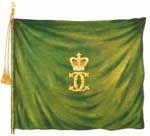
This unique distinction, dating from the late 17th Century, was inherited from The Queen’s Royal Regiment. The Colour was held by the 1st Battalion and was not permitted to be carried on parade. At the time of the formation of the Regiment, the Colour in service was thirty-six years old and much worn.
A new Colour was brought into service during the Queen’s Silver Jubilee year, 1977. This Colour only appeared on parade twice: once when it was brought into service and blessed; and once at the disbandment parade of the 1st Battalion in Minden on the Glorious First of June 1992.
Fighting Record & Battle History
The fighting record of the Queen's Regiment is impressive. Battles and campaigns as mentioned, include Tangier 1662-80, the oldest battle honour on any Regimental Colour; Sedgemoor 1685; the Continental War 1689-97; The War of the Spanish Succession 1702-12; The War of the Austrian Succession 1742-48; The Seven Years War 1756-63; The War of American Independence 1776-83; The French War 1793-1801; The Napoleonic Wars 1803-15; The Crimean War 1854-56; The South African War 1899-1902; the two World Wars and finally Korea 1950-51.
Since then the Queen's Regiment or its predecessors have been engaged in internal security operations in Palestine, Hong Kong, Egypt, Kenya, Cyprus, Aden, British Guyana and Northern Ireland.
The George Cross
The following won the George Cross while serving with one of our former regiments.
Colonel LA Newnham, MC, 1st Middlesex, Hong Kong, 1943
Lance Corporal G Henshaw, 1st Queen's, Quetta, 1935
Private A Brook, 1st Queen's, Quetta, 1935
